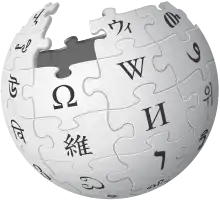pietà
English

The western gate of the church of Maria am Gestade, Vienna, featuring a mosaic pietà
Alternative forms
Noun
pietà (plural pietàs)
- A sculpture or painting of the Virgin Mary holding and mourning the dead body of Jesus.
- 1998, David Adams, “Afterword: The Artistic Alchemy of Joseph Beuys”, in Thomas Braatz, transl., Bees, Rudolf Steiner, page 195:
- Whereas Beuys's early sculptural work was consciously formed within a modernized version of the stylized Romanesque tradition of art, frequently with a Christian content such as crucifixions or pietàs, he gradually was able to free himself from this more traditional approach.
- 2009, Pico Iyer, “5: Making Kindness Stand to Reason”, in Rajiv Mehrotra, editor, Understanding the Dalai Lama, page 61:
- Ceremonial masks, Hindu deities, and pietàs shine down on you.
- 2011, Caroline van Eck, Stijn Bussels, Theatricality in Early Modern Art and Architecture, page 10:
- It does not show the events it depicts as static, frozen in the eternal present of historia sacra in the way many late medieval crucifixions, pietàs or annunciations do, but as a narrative.
See also
 pietà on Wikipedia.Wikipedia
pietà on Wikipedia.Wikipedia  Category:Pietà on Wikimedia Commons.Wikimedia Commons
Category:Pietà on Wikimedia Commons.Wikimedia Commons
Italian
Etymology
Inherited from Old Italian pietade, pietate, from Latin pietātem (“piety”, “pity”). By surface analysis, pio (“pious”) + -età (“-ity”).
Pronunciation
- IPA(key): /pjeˈta/*
- Rhymes: -a
- Hyphenation: pie‧tà
Related terms
Further reading
- pietà in Treccani.it – Vocabolario Treccani on line, Istituto dell'Enciclopedia Italiana
 Pietà (sentimento) on the Italian Wikipedia.Wikipedia it
Pietà (sentimento) on the Italian Wikipedia.Wikipedia it Pietà (arte) on the Italian Wikipedia.Wikipedia it
Pietà (arte) on the Italian Wikipedia.Wikipedia it Pietà (araldica) on the Italian Wikipedia.Wikipedia it
Pietà (araldica) on the Italian Wikipedia.Wikipedia it
This article is issued from Wiktionary. The text is licensed under Creative Commons - Attribution - Sharealike. Additional terms may apply for the media files.